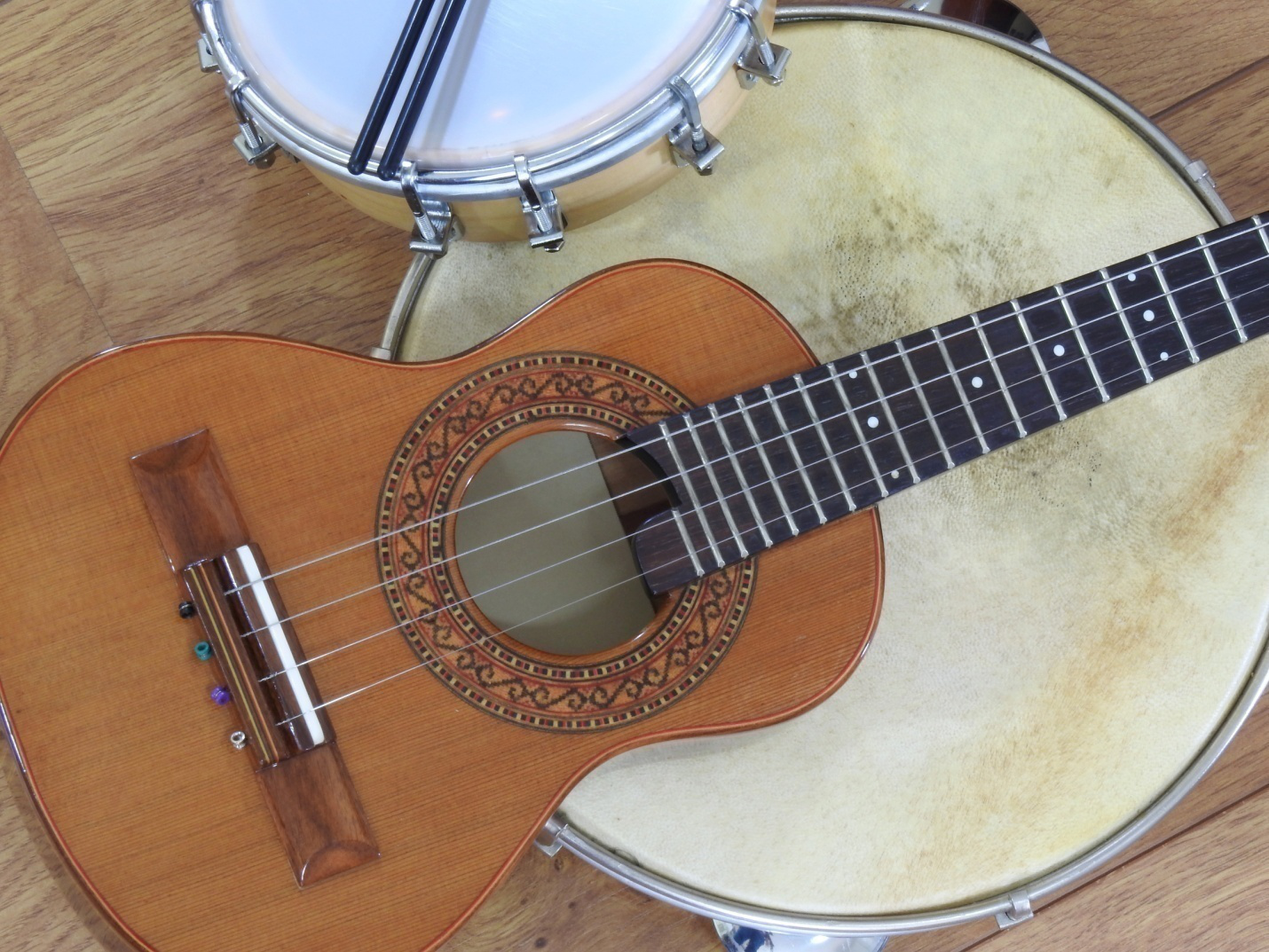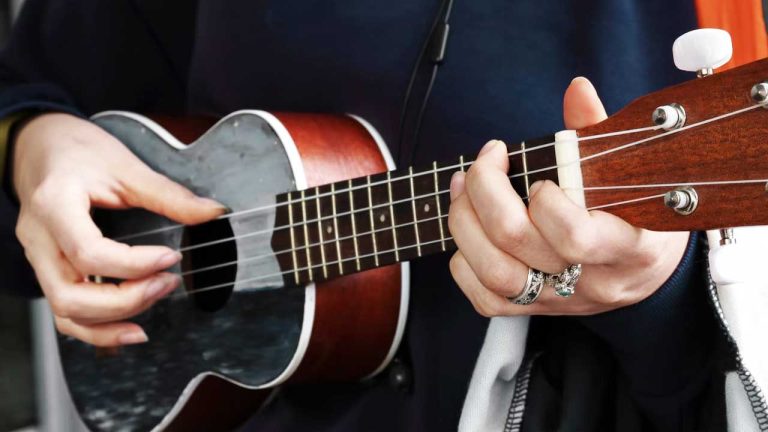Cavaquinho vs Ukulele – What’s the Difference Between The Cavaquinho And The Ukulele?
Folkstrings.com is reader-supported. When you buy through links on our site, we may earn a small commission.
When it comes to the question of the cavaquinho vs ukulele, although the cavaquinho and the ukulele are from the same family and have the same number of strings, they are very different instruments.
Understanding the key differences between these two instruments will help musicians make the choice on which one speaks to them most fluently.
Before diving into their differences, it is important to understand the history of the two instruments and the common ground they share.
The cavaquinho is a Portuguese instrument. The name means, “Little Wood Splinter”.
When the Portuguese came to Hawaii, they would bring these instruments with them on their travels.
The Hawaiians were amazed at how fast the Portuguese could move their fingers up and down the neck. They referred to this instrument as the ukulele which means, “Jumping Flea”.
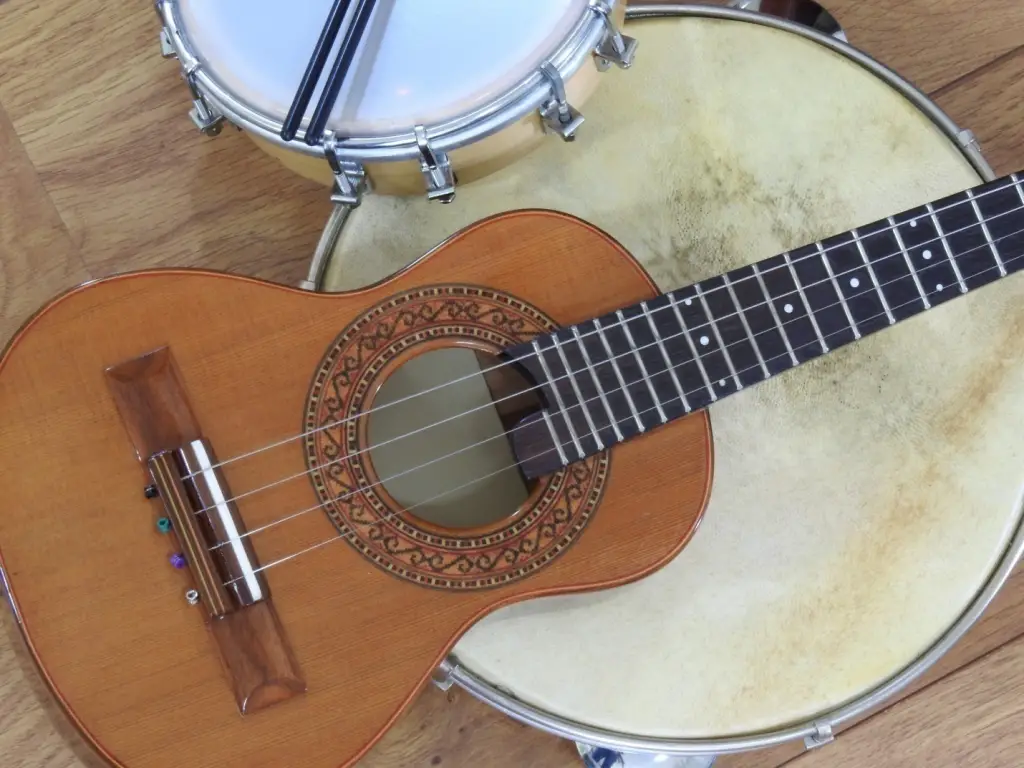
Once in Hawaii, in the 1800s, the cavaquinho underwent some changes that brought about the ukulele we know and love today.
Although these instruments are undoubtedly relatives from the same family branch, there are key differences.
Once made aware of these differences, musicians often find it easier to choose between the two.
Table of Contents
- What are the Differences Between The Cavaquinho And The Ukulele?
- Does The Ukulele And The Cavaquinho Both Sound The Same?
- How to Tune a Cavaquinho
- What Is a Cavaquinho Tuner?
- Is a Tuner the Best Way to Tune a Cavaquinho?
- Conclusion – The Difference Between The Cavaquinho And The Ukulele
What are the Differences Between The Cavaquinho And The Ukulele?
As stated above, there are some key differences between the cavaquinho and the ukulele.
You can consider the cavaquinho a predecessor to the ukulele.
Once brought to Hawaii, the Hawaiians made it their own.
The following are some key differences between these two instruments.
· The cavaquinho and the ukulele have different types of strings.
· The construction of these two instruments is slightly different.
· The headstock and friction tuners are different.
· There are sound differences between the cavaquinho and the ukulele.
· The way these instruments are tuned differs between the two.
Strings
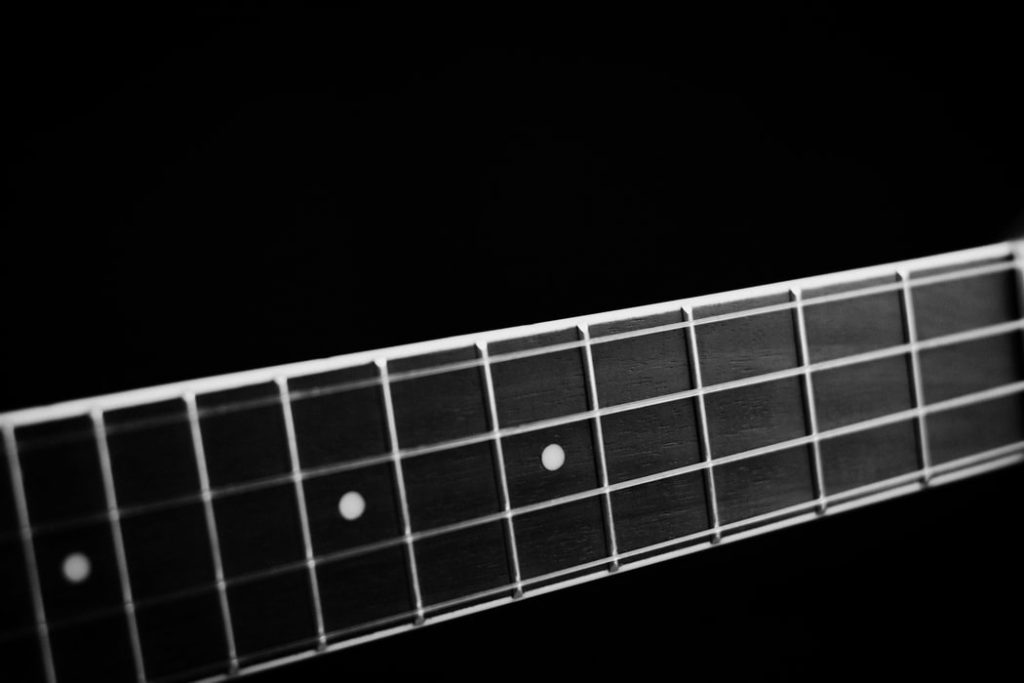
Typically, ukuleles have Nylon or gut strings, while the cavaquinho has steel strings.
Although the strings are much the same in size, the cavaquinho is more painful to play at first, at least until a musician toughens up their fingers with calluses.
Construction
Although they look similar, it is important to note there are some differences in construction.
In most cases, the cavaquinho is going to have a thinner body than the ukulele.
Cavaquinhos also have a flush fretboard, whereas the ukulele has a fretboard that slightly protrudes from the body of the instrument.
Headstock and Tuners
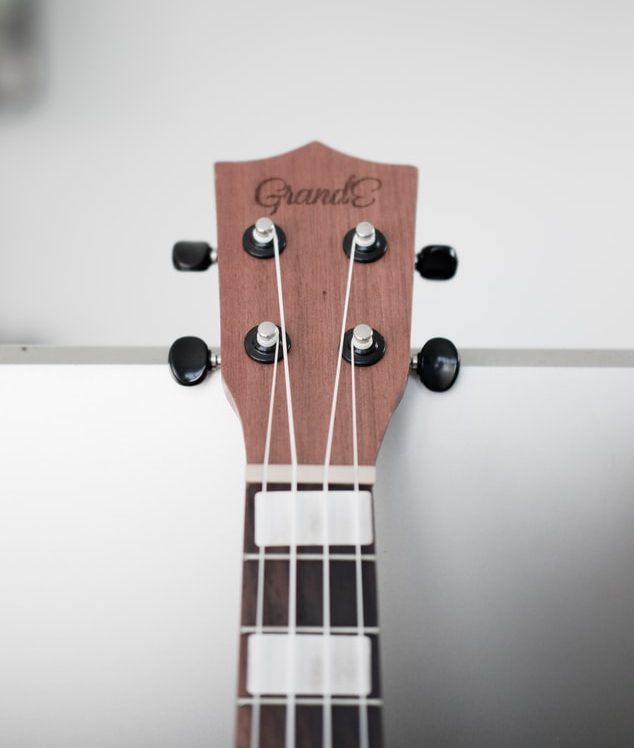
The headstock and tuners are also different for each instrument.
On the cavaquinho, the headstock is cut out and features lateral friction tuners.
The ukulele does not have a cut-out headstock and the friction tuners run from the front to the back.
Modern-day ukuleles have geared tuners and may offer cut-out headstocks, though this is rare.
Does The Ukulele And The Cavaquinho Both Sound The Same?
There are some key differences in the way these two instruments sound.
Before talking about the differences, there are some similarities.
Both the cavaquinho and the ukulele have the same bright, whimsical sounds because they both have similar strings and are tuned high.
Most musicians consider the cavaquinho to be slightly brighter and higher than the ukulele because the tuning is just one step higher.
It is also important to note that the strings make a difference in the sound.
The cavaquinho, with its steel strings, offers a sharper and crisper sound over the flatter and more mellow sounds of the ukulele, with its Nylon strings.
This does not make one instrument offer better sound than the other. Rather, it is just a difference trained ears will pick up on right away.
You will probably find you can play the same song on both instruments and only experience minor differences in sound, but to trained ears, the differences are enough to embrace both instruments because of their true uniqueness.
How to Tune a Cavaquinho
Before delving into the topic of tuning a cavaquinho, it is important to understand there are two main types.
The most common type is the Portuguese cavaquinho, but there is also a Brazilian cavaquinho that is larger.
The following steps will help you to become a pro at tuning a cavaquinho.
1. The first string is tuned first. This is the D string, and it is tuned without holding down the string on the fret.
2. The second string, the G string, is tuned next. Hold down the first string on the 5th fret, for a G sound. Match that sound with your second string.
3. Next, you will tune the third string, which is the B string. Hold down the second string on the 4th fret. You should get the B sound. Match this sound with your 3rd string.
4. Finally, you will tune the 4th string, which is the D string. Hold down the third string on the third fret to make a D sound. Match this D sound with your fourth string.
When you first begin tuning a cavaquinho, it can be a little intimidating.
It is important to be patient and take time in the process.
Although this instrument is a bit tedious to tune, it is not overly difficult.
With practice, you should be able to master tuning the cavaquinho. Once tuned correctly, you should get a G major sound when strumming all the strings together, without pressing any of them.
With the ability to get the G major sound, without pressing any strings, you can easily practice strumming.
Having Trouble?
It is common to experience issues with tuning, especially when you are new to playing the cavaquinho.
Do not fret! All new musicians have trouble with this aspect of maintaining the cavaquinho, which is why we have included this instructional video.
By following the above steps and watching the video, you will soon be able to tune your cavaquinho effortlessly.
What Is a Cavaquinho Tuner?
The cavaquinho is most commonly tuned using DGBD.
You will tune a cavaquinho linearly, going from lowest to highest, which is the opposite of the ukulele’s tuning style of re-entrant.
Many people find it difficult to tune a cavaquinho, so they rely on tuners to help them tune their instruments properly.
Just like the tuners used for guitars, cavaquinho tuners measure the frequencies that are produced by the vibrating sounds of the strings on a cavaquinho.
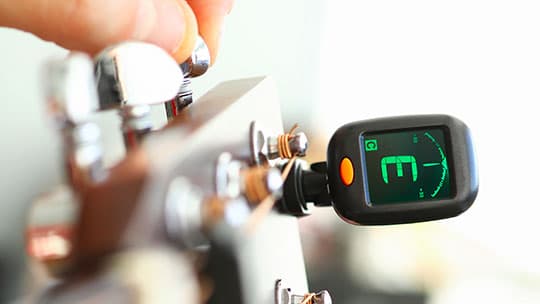
After measuring the frequencies, the tuner compares them to the notes in a scale.
The tuner will display the name of the note being sounded, allowing musicians to determine if a particular string has been tuned properly.
To use a tuner, take the following steps.
1. First, turn the tuner on. Most electronic tuners work on battery power, but there are some USB devices available.
2. Next, pluck the string you are tuning. Remember, on a cavaquinho, you will usually start with the lowest string.
3. The tuner will display the name of the closest note.
4. If the string is not quite where it should be, in proximity to the note, the tuner will indicate if the note is too sharp or too flat.
5. While watching the tuner’s screen, adjust the friction tuners until the note for each string is perfect.
Is a Tuner the Best Way to Tune a Cavaquinho?
As with any stringed instrument, having a properly tuned cavaquinho is essential for learning to play correctly.
If your instrument is out of tune, playing is going to be difficult, and even annoying.
If you are new to this instrument, it would be wise for you to consider purchasing an electronic tuner.
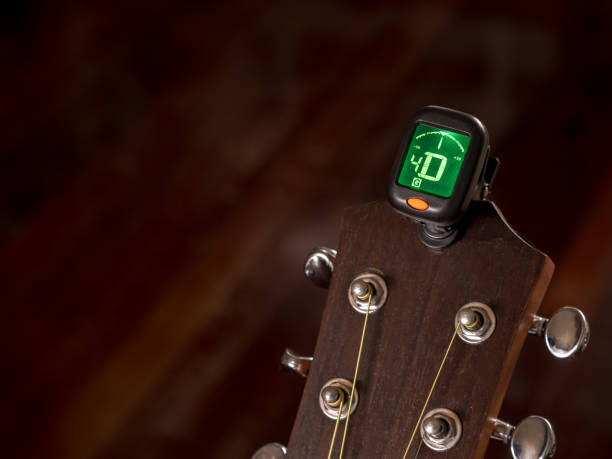
These devices offer a simple way for musicians to ensure their strings are tuned properly.
Electronic tuners are chromatic, meaning the tuner hears the sound of each string and displays the note name.
A chromatic tuner is the best way to tune a cavaquinho as a beginner. You will be able to adjust the strings until you get the perfect pitch for each one.
With this type of tuner, you will know without a doubt your instrument is tuned precisely.
There are also pitch tuners that can be helpful if you have a trained ear. These tuners play the pitch, and then you must match the pitch by ear.
If you work better by hearing, then a pitch tuner will be a good fit. If you are a visual learner, try using a chromatic tuner.
Conclusion – The Difference Between The Cavaquinho And The Ukulele
Now, you know the basic differences between a cavaquinho and a ukulele. You know how these instruments sound and how they are tuned.
No matter which instrument you choose, they offer beautiful tones that are melodic and whimsical. The sounds of these instruments will be music to your ears.
Author Profile
-
Daniel Johnstone is an English writer with a love for stringed instruments from around the world.
He shares his love for these instruments through his writing for folkstrings.com, a website dedicated to all things related to folk string music.
Daniel's passion for music started at a young age, and he has since become an accomplished musician, playing guitar, cavaco, and recently, the harp.
His dedication to learning and sharing his knowledge of stringed instruments is evident in his insightful and engaging blog posts. Whether you're a seasoned musician or a beginner, Daniel's writing is sure to inspire and entertain you.
When he's not playing music or writing, you can find Daniel exploring new instruments and seeking out new sounds to share with his readers.
Latest entries
 AutoharpApril 4, 2024What Is the Autoharp Made Of: Exploring Its Materials and Craftsmanship
AutoharpApril 4, 2024What Is the Autoharp Made Of: Exploring Its Materials and Craftsmanship AutoharpApril 4, 2024Is Autoharp Easy to Play? Unveiling the Truth for Beginners
AutoharpApril 4, 2024Is Autoharp Easy to Play? Unveiling the Truth for Beginners AutoharpApril 4, 2024What Is an Autoharp Worth? Your Guide to Pricing and Value
AutoharpApril 4, 2024What Is an Autoharp Worth? Your Guide to Pricing and Value AutoharpApril 4, 2024Are Autoharp and Zither the Same Thing? Unraveling String Instrument Myths
AutoharpApril 4, 2024Are Autoharp and Zither the Same Thing? Unraveling String Instrument Myths
Affiliates:
This post may contain affiliate links that at no additional cost to you, the site may earn a small commission. We only recommend products we would use ourselves and all opinions expressed on this site are our own.
Accuracy Advice:
While we strive to provide up-to-date and accurate information, the content in this article may not reflect the most current research or medical guidelines. We encourage readers to do further research and consult with professionals for more personalized advice.
Our Recommendations:
The products and services mentioned in any of our articles are recommended based on our independent research and personal experience. We are not sponsored by any company. We aim to suggest products and services we believe are of high quality and could be beneficial to our readers.

